Thoughts From Our Collective Mind
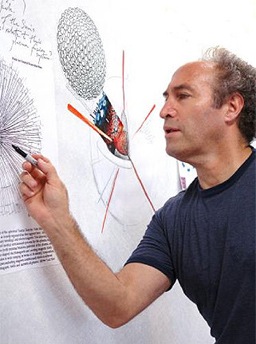
“Each theory may have evolved from a unique angle of analysis, but ultimately our theories form from – and refer to – a sort of unified, collective mind.”
–Todd Siler (American Visual Artist, Educator, Inventor and Author, 1953-)

Knowing Woman
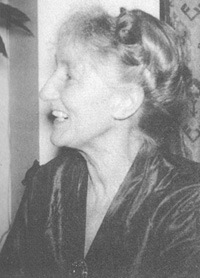
“A woman today lives in perpetual conflict. She cannot slay the dragon of the unconscious without severing her own essential contact with it; without in fact destroying her feminine strength and becoming a mere pseudo-man. Her task is a peculiarly difficult one. She needs the focused consciousness her animus alone can give her, yet she must not forsake her woman?s role of mediator to man. Through a woman, man finds his soul. She must never forget this. Through a woman, not through a pseudo-man. Through man, woman finds the animus who can express the soul she has never lost. Her burning need is to trust her own diffuse awareness, to know what she knows and to learn to speak of it, for until it is expressed she does not wholly know it.”
–Irene Claremont de Castillejo English-born Jungian Analyst who Specialized in “Feminine Psychology,” and Worked with Emma Jung and Toni Wolff, 1885-1967)

“Knowing Woman: A Feminine Psychology” (Irene de Castillejo)
How We All Connect
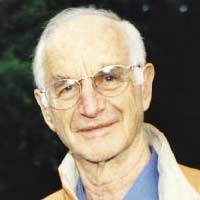
“All images and experiences of my soul are images and experiences of your soul. This field of psychic reality which is immanent to each transcends the individual differences between us, giving us the common language based on our common patterns of experience. Through our unconscious we all connect.”
–James Hillman (American Psychologist, 1926-2011)

“Insearch: Psychology and Religion (Jungian Classics Series)” (James Hillman)
Ancient Stories That Guide Our Lives
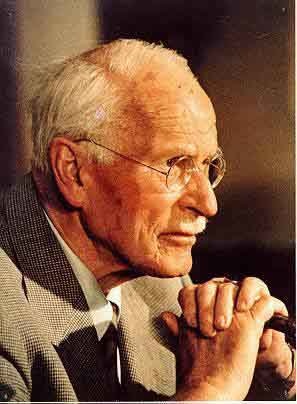
“Whereas we think in periods of years, the unconscious thinks and lives in terms of millennia. So when something happens that seems to us an unexampled novelty, it is generally a very old story indeed. We still forget, like children, what happened yesterday. We are still living in a wonderful new world where man thinks himself astonishingly new and “modern.” This is unmistakable proof of the youthfulness of human consciousness, which has not yet grown aware of its historical antecedents.”
–Carl G. Jung (Swiss Psychologist and Psychiatrist, 1875-1961)

Traditions

“Traditions are the guideposts driven deep in our subconscious minds. The most powerful ones are those we can’t even describe and aren’t even aware of.”
–Ellen Goodman (American Newspaper Columnist, 1941-)
Myths and the Mind
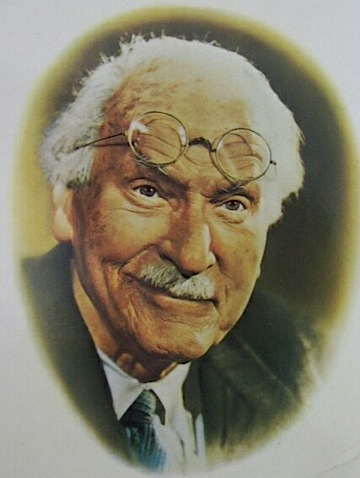
“So far mythologists have always helped themselves out with solar, lunar, meteorological, vegetal, and other ideas of the kind. The fact that myths are first and foremost psychic phenomena that reveal the nature of the soul is something they have absolutely refused to see until now.
Primitive man is not much interested in objective explanations of the obvious, but he has an imperative need or rather, his unconscious psyche has an irresistible urge to assimilate all outer sense experiences to inner, psychic events. It is not enough for the primitive to see the sun rise and set; this external observation must at the same time be a psychic happening: the sun in its course must represent the fate of a god or hero who, in the last analysis, dwells nowhere except in the soul of man.
All the mythologized processes of nature, such as summer and winter, the phases of the moon, the rainy seasons, and so forth, are in no sense allegories of these objective occurrences; rather they are symbolic expressions of the inner, unconscious drama of the psyche which becomes accessible to man’s consciousness by way of projection-that is, mirrored in the events of nature.”
–Carl G. Jung (Swiss Psychologist and Psychiatrist, 1875-1961)
From: “Archetypes of the Collective Unconscious” (1935). In Collected Works 9, Part I: The Archetypes and the Collective Unconscious. P.7

Denying the Negative in the Unconscious

“The dammed-up instinct-forces in civilized man are immensely more destructive, and hence more dangerous, than the instincts of the primitive, who in a modest degree is constantly living his negative instincts. Consequently no war of the historical past can rival a war between civilized nations in its colossal scale of horror.”
–Carl G. Jung (Swiss Psychologist and Psychiatrist, 1875-1961)

“Psychological Types (The Collected Works of C. G. Jung, Vol. 6) (Bollingen Series XX)” (C. G. Jung)
Does the Spinal Cord Think?
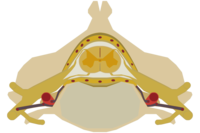
In recent years we have become very interested in the ever-increasing evidence there are large complex neural networks outside the brain and autonomic nervous system. The main ones are in the intestine and the heart. These systems are so complex and well organized that some people have talked about us having a “brain” in the heart and another in the intestine. This may be a bit of an over-statement. For instance the cerebellum at the back of the brain is large and highly complex, but is so arranged that it probably cannot generate conscious experience. That particular trick needs a cerebral cortex that self-organizes, recruits new systems when necessary for some particular task and generates vast oscillations that are modulated by genes and the environment.
Now new research has shown that the spinal cord has some of those same properties that we associate with the cerebral cortex. This groundbreaking work has just been published in the journal Science, and the entire paper is available here.
So why the excitement and interest? It often astonishes me how many students who come to my lectures seem not to have a curiosity gene. And there is so much about which we should be curious. Despite the billions spent on research there is still a great deal about the human body that is not understood at all. Not small esoteric things, but huge questions.
For instance how can some people think and communicate even if most of the brain is destroyed by disease? On the other hand some people are incapacitated by the smallest lesion. I’ve taught neurology for years, in particular the art of neurological examination. I was trained by some of the best in the world, so I know how to look for subtle neurological signs. Yet I’ve seen a great many inexplicable things: I saw someone come to autopsy who had no neurological signs, but had a tumor occupying more than half of the dominant hemisphere of the brain.
Here’s another puzzle: we don’t know how humans are able to move. Our muscles are controlled by thousands of nerve cells in the brain, spinal cord and peripheral nervous system. This entire complex system must work as a whole in order to successfully generate a single motion. Yet how quickly do most children learn to stand and walk. The new research has shown that the spinal cord is not a passive signal conductor, but has instead shown that spinal neurons, while engaged in the network activity underlying movements, show irregular firing patterns similar to those seen in the cerebral cortex. Even if we repeat a certain motion with high accuracy, the nerve cells involved never repeat their activity patterns. Just the same as happens in the cerebral cortex.
This is yet more evidence to suggest that “thinking” does not only go on in the brain. It makes sense to think of the major systems – heart, intestine and spine – as key components of the subliminal, pre-conscious mind. Some people like the term subconscious, but that runs into the confusing problem of mixing up the terms subconscious and unconscious.
I talk about some of these differences and how to work these different parts of yourself in the book and CD series Healing, Meaning and Purpose.
Chiropractors have been telling us for years that the spinal cord is a lot more than just a relay system. It looks as if they may have been correct.
If you are interested in following up on my comments about what it takes for a neural network to generate conscious experiences, you may be interested in having a look at my review of the excellent new book Rhythms of the Brain by Gyorgy Buzsáki. and
The Irreducible Mind
I get a great many requests for recommendations for books and papers that either debate or provide support for the topics that I discuss on this blog and in my books and articles. That is why I’ve been constructing some reading lists at Amazon.com and linking them to this website.
A friend recently commented that she was surprised that the book and CD series, Healing, Meaning and Purpose that was created for a general audience, contains over 800 books and websites. My response to that was that I think that my readers and listeners are all grown ups who should be able to check everything that any author says!
The days of authors or speakers waving their hands about and making airy statements are finally coming to an end. If an author tells you that "science" proves what they are saying, they must show that they understand the topic themselves. I just saw yet another paper in which the writer said, "Quantum mechanics proves what I’m saying, but let’s not get into that." Well, that’s just the point: let us indeed get into that to see if what you are saying holds water!
Which brings me to a book that I’ve just read and reviewed. It is entitled Irreducible Mind: Toward a Psychology for the 21st Century and it is an extraordinary achievement. For the last century, the vast majority psychologists, psychiatrists and neuroscientists have believed that thoughts, emotions and consciousness are the product of physical processes in the brain. And , of course, the brain is heavily involved in many mental phenomena. The question has always been if neurological activity is sufficient to explain the whole of human experience.
This new book presents the most comprehensive and critical analysis of phenomena normally ignored by psychology, including mystical experiences, the placebo response, stigmata and hypnotic suggestion, memories that survive physical death, near death experiences, automatic writing, out-of-body experiences, apparitions, deathbed visions and many more.
It comes to the inescapable conclusion that the mind is not generated by the brain but is instead limited and constrained by it. There is no hand waving, and no "science has shown that…" Instead everything is laid out in front of you. There are a hundred pages of citations and references. Despite that, it is an easy and enjoyable read.
I have no personal connection with the book, but the next time that someone says that there’s no proof for any of these phenomena, and that emotions, cognitions and consciousness are just byproducts of biochemical processes in the brain, refer them to this book.
And if Santa brought you any gift cards that you haven’t used yet, you might want to have a look at the book for yourself.
Intuitive Decision Making
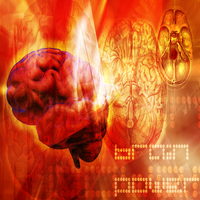
Regular readers will remember some of our discussions about the value and development of intuition and the differences between intuition and instinct.
Almost a year ago I reported on some exceptionally important research into decision making that showed that when making complex decisions rapid intuitive unconscious decisions usually trump conscious deliberation.
There is some brand new research reported in today’s issue of the journal Current Biology.
Li Zhaoping and Nathalie Guyader form the Department of Psychology at University College, London used a computer-based task to examine decision making. Ten volunteers were showed a computer screen covered in over 650 identical symbols, including one rotated version of the symbol. They were asked to decide which side of the screen the rotated image was on.
Given a fraction of a second to look at the screen, the subjects were 95% accurate. But when they were allowed to scrutinize the image for over one second, they were only 70% accurate.
It is likely that the instinctive decisions were more often correct because the preconscious processing regions of the brain recognized a rotated version of the same object as different from the original, whereas the conscious brain could identify the two objects as identical, albeit in different orientations. A great many processes occur below the level of conscious awareness, and they are best called pre-conscious, rather than terms like unconscious, which can lead to confusion with the psychoanalytic term “the unconscious mind” or “subconscious,” which includes many of the autonomic and endocrine functions of the body.
What normally happens is that the conscious or top-level function of the brain, when active, vetoes our initial subconscious decision – even when it is correct – leaving us unaware or distrustful of our instincts and at an immediate disadvantage.When we trust our inbuilt, involuntary preconscious processes for certain tasks they are actually more effective than using our higher-level cognitive functions.
This makes good sense: people and animals are designed to notice anything that is out of the ordinary to help them escape from predators. There is often no time for consious thought. This is also why martial artists practice and practice again so that they can react without thinking.
As a youngster I was a keen fencer. For hours I would use the tip of my foil to keep hitting a squash ball that dangled by a rope from the ceiling. After a while it becomes a reflex, because the pre-conscious regions of the brain take over.
This research once again highlights something very important: use instinctive and intuitive reactions when requied, but balance them with sound reasoning: one without the other is rarely a good idea!






